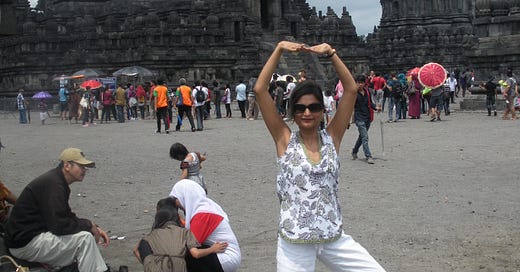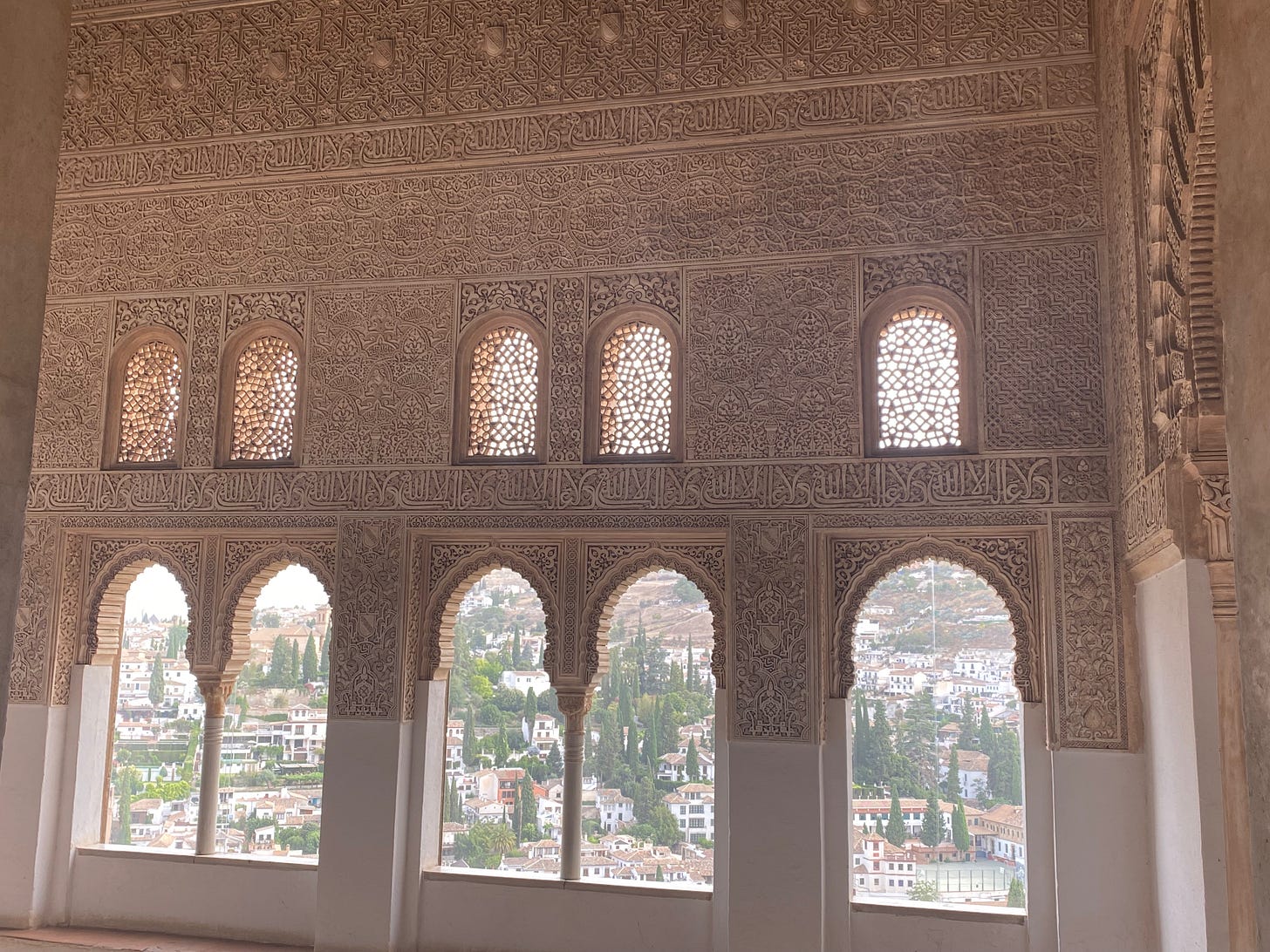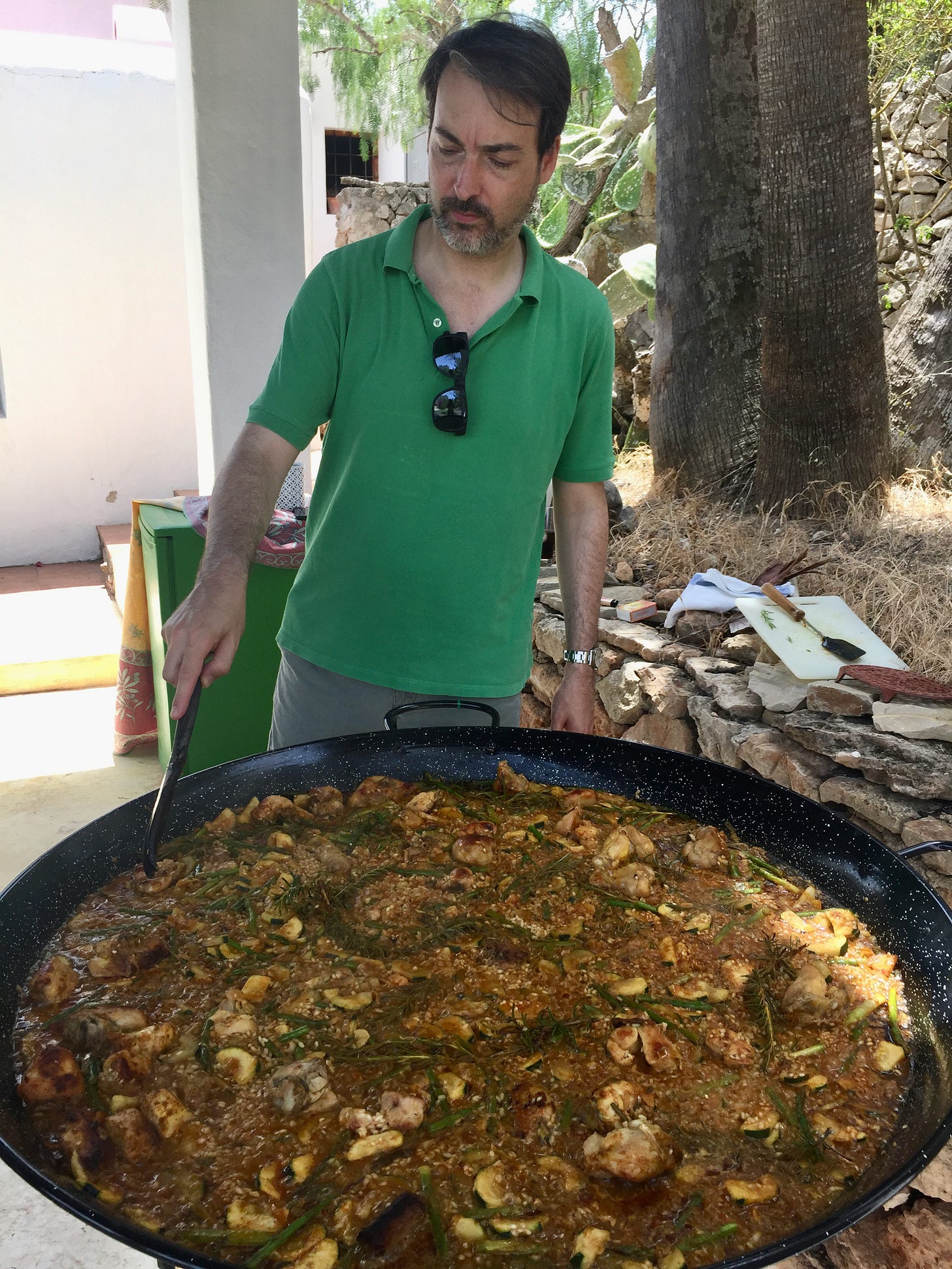Hola Global Jigsawers,
My one-year anniversary as a resident of Spain has just gone by. In so many ways the people here remind me of those back “home,” in India. Both Spaniards and Indians are unguarded physically and terminally social. Both display sub-optimal regard for the aural sanctity of public spaces. And both nations suffer from bureaucratitis, a condition whose symptoms include form filling in triplicate and legions of chai/coffee break-habituated government officials whose lips seem to have forgotten how to curve upwards.
But in other ways, it is Indonesia that Spain reminds me of. These are two countries rarely uttered in the same sentence, given their different geo-strategic orbits. And yet, as nations they share a sense of being somewhat mysterious to themselves, the result of a cultural rupture between their histories and their present.
The Hindu-Buddhist, Islamic Republic of Indonesia
In Indonesia’s case the disjuncture is between the archipelago’s Hindu-Buddhist past and its contemporary avatar as an Islamic republic. Hindu-Buddhist kingdoms ruled much of the territory encompassed by modern-day Indonesia, between the 7th and 16th centuries. Islam then spread across the region in the 17th century under the influence of Muslim traders and clerics from India, China and the Arab states.
Today, Indonesia has the largest Muslim population in the world, with approximately 225 million Muslims, who make up about 87 percent of the population.
The Islamic, secular-Christian, parliamentary-monarchy of Spain
In Spain, it is the break between a medieval Islamic history and a secular-Christian present. For over 700 years, between the 8th and 15th centuries, Muslims ruled over large parts of Spain. The Moors - the local term for the North African Muslims who crossed over the Straits of Gibraltar into the Iberian Peninsula - went on to establish a series of powerful polities collectively known as al-Andalus.
The vulgar Latin language spoken in the region prior to the Islamic invasions gradually evolved into many idioms under the influence of Arabic. Eventually, a dialect called Mozarabic developed and it became the principal medium for passing Arabic words into Spanish, of which there are an abundance even today. Arabic knowledge in science, medicine and literature helped develop “Spain’s” intellectual culture. Syncretism was a feature of the peninsula’s architecture, music and food.
After the reconquest of Spain was completed by the Catholic monarchs in 1492, Spain gradually lost its multicultural identity as it embarked down the road of religious purges, expelling Jews and Moriscos – crypto-Muslims who had nominally converted to Christianity, but retained their original faith in secret.
In twenty first century Spain you are likely to find Spaniards who claim a greater affinity to Buddhist new-age meditation than anything Islamic- which has become, as in much of the west, wholly “other.” The past for most Spaniards is a series of Catholic Kings, followed by the dictatorship of General Franco and ending in the country’s membership of the European Union.
Handcuffed to history, yet opaque to ourselves
The problem is that we are all handcuffed to our histories as individuals and as nations, so that the inability to perceive that history in our present, makes us opaque to ourselves. It makes for a culture where the “other” is actually an unrealized part of the self; a “self” that is consequently not fully recognized.
The polytheistic nomenclature of Indonesia’s wahabis
In Indonesia, where I lived between 2012-2016, I would encounter this disconnect constantly. The archipelago’s language, forms of entertainment and nomenclature all harked to Sanskritized and Indic origins that revealed themselves to me with greater clarity than they did to Indonesians themselves.
I’d shake open the newspapers and read about the Minister of Religion, a wahabi-leaning Islamic conservative called Suryadharma Ali. Suryadharma means the “religion of the sun” in Sanskrit. It is as Hindu a name as Maria is a Catholic one. The Islamist minister’s name was dizzyingly polytheistic, although its Hindu associations were opaque to the average Indonesian.
When I visited Gontor, a prominent pesantren/madrasa or Islamic boarding school, in East Java, I was told that the three brothers who’d founded the school in 1926 are collectively referred to as the trimurti. That this triumvirate of Muslim reformers are referred to by a Sanskrit term, literally the “three forms” that denotes the three Hindu Gods of Brahma, Vishnu and Shiva, was a fact that once again remained obscure to those who used it.
A visit to Indonesia’s national museum in Jakarta, colloquially referred to as the Museum Gajah – an ancient Sanskrit word for elephant – after the statue of an elephant on its front lawns, is a study in Hindu-Buddhist art. Its rooms and courtyards are filled with bas-reliefs from Hindu temples and its treasure rooms feature gold bowls with carvings of scenes from the Hindu mythological epic – the Ramayana.
Me striking a pose in front of the 8th century Prambanan temple in Jogjakarta, Indonesia
Almost as remarkable as the artifacts themselves is the near total absence of Islamic art or cultural representation. And yet, modern day Indonesians are not only followers of Islam, but increasingly of an Arab-inspired variant which exerts an increasingly overweening influence on their clothing, architecture, and naming conventions.
During the years I spent in the country, there was more construction energy expended on erecting minarets than on roads and other much-needed infrastructure. Women were gradually disappearing inside Arabic-inspired clothing, starting with headscarves and devolving into elbow-length gloves and socks, even in the sweltering tropical weather.
An Indonesian pesantren or Islamic boarding school for girls. Credit: Pallavi Aiyar
And yet, popular entertainment like wayang kulit, or shadow puppet theatre featuring stories from the Hindu epics, remained a mainstay. Children were as likely to be called Fatima as Sinta (the Indonesian version of the Hindu- Sita). The “problem” was that this syncretism wasn’t conscious or understood. Nor was it valorised as a source of Indonesian identity. For that Indonesians were increasingly looking to Mecca, either unaware or uncaring that in doing so they were only losing an integral part of themselves.
Mozarabic
In Madrid, I’ve been learning Spanish for the last year, listening to flamenco guitar, eating paella and visiting the great sites, like the Alhambra in Granada and the Mezquita in Cordoba. In short, I’ve been living a heavily Islamic-influenced life that is once again more familiar to me than to the locals, thanks to India’s own Islamic past and present.
View from inside the Alhambra in Granada. Pic Credit: Pallavi Aiyar
I was blown away to learn that “ojala,” which means “hopefully” in Spanish, has its root in “insh’allah.” So that every time a Spaniard says something akin to, “Hopefully we’ll meet soon,” or “Hopefully you’ll be better by next week,” unbeknownst to them, they are invoking the grace of God (Allah).
There are thousands of Arabic-rooted words in modern Spanish. Most of these are nouns rather than verbs or adjectives, similar to the Sanskrit influence on Bahasa Indonesia which is also noun-heavy. Here is a curated list of some of these. Note the similarity with many words in Hindi/Hindustani too– which betray the common debt the two languages (Spanish and Hindu) owe to Arabic, in India’s case mediated via Persian.
· Aceite (Mozarabic – azzáyt, Classical Arabic – azzayt), English- Oil
· Aceituna (Mozarabic – azzaytúna, Classical Arabic – zaytünah), English-Olive
· Azúcar (Mozarabic – assúkkar, Classical Arabic – sukkar), Hindi-shakkar, English -Sugar
· Berenjena (Mozarabic – baḏinǧána, Classical Arabic – bāḏinǧānah), Hindi-Baingan, English - Eggplant
· Naranja (Mozarabic – naranǧa, Classical Arabic – nāranǧ), Hindi- Narangi, English-Orange
· Ajedrez (Mozarabic – aššaṭranǧ or aššiṭranǧ, Classical Arabic – šiṭranǧ), Hindi-Shatranj, English- Chess
· Alfombra (Mozarabic – alḥánbal, Classical Arabic – ḥanbal), Hindi- kambal (blanket) (NB: this could be an example of Sanskrit influencing Arabic influencing Spanish), English- Carpet/Rug
· Almohada (Mozarabic – almuẖádda, Classical Arabic – miẖaddah), English- Pillow
· Camisa (Arabic- qamis), Hindi-kameez, English-Shirt
· Hasta, as in “hasta la vista” (Arabic ḥattá), English-Until
And then there is Spain’s national dish contender: paella. The most prominent ingredient of paella, rice, was introduced to the Iberian Peninsula by the Moors (the word in Spanish for rice, “arroz,” derived from the Mozarabic - arráwz, from the Arabic ‘arruzz’), as was the key spice of saffron. Muslims also introduced Spain to cilantro, cumin, cinnamon, cloves, almonds and sugar – some of which were introduced to the Arabs from the Indian subcontinent and Indonesia – oh what a glorious #globaljigsaw we live in!
My husband Julio, and a massive vat of paella. Pic credit: Pallavi Aiyar
Spanish Catholicism
Most fascinating (and opaque) of all these Moorish influences on Spain, is the Islamic impact on Christianity. Christianity in Spain is of a different texture to Christianity in the rest of Europe, not only to the Protestantism of the north, but even to the Catholicism practiced elsewhere on the continent.
It puts me in mind of a delicious mishmash of Islamic Sufism, idolatrous Hinduism, paganism and the religion of Christ. Spanish Christianity is expressed in processions of believers bearing aloft the idols of local saints, accompanied by music with roots in the Islamic period. There is a belief in miracles. There are the ceremonial penitents or nazarenos of Easter pasos (parades).
It all feels cut of the same cloth as Ganesh Chaturthi processions, the ecstatic mysticism of sufi celebrations and the public penance of Muharram spectacles.
Spanish Christmas carols sound nothing like the coke-commercial saccharine refrains of Rudolf the Red Nosed Reindeer. Nor more spiritual hymns like Silent Night. They are sad and wavering laments, known as villancicos, which developed from Arab-Spanish poetry in Al-Andalus called muwashshah and zajal. These were in turn adapted from the Eastern Arabian musammaṭ, a simpler form of stanza-based poems.
The Cantiga, a genre of 13th-century Spanish songs that often honour the Virgin Mary were also likely influenced by zajal. The most famous collection of cantigas is a manuscript called the Cantigas de Santa María, which was compiled by King Alfonso X (1221-1284) of Castile and Leon. Many of these are direct translations of Arab zajal verses.
Even the romerías of Andalucía - annual pilgrimages held near Christian shrines featuring floats, idols, singing and general revelry - have been linked to similar visits to the shrines of Muslim holy men that possibly predated the Christian tradition.
******
The forgetting of the past in Indonesia and Spain is probably both accidental and willful. Memory is artifice as much as fact. And History is a by-product of this dual amnesia and constructed recollection.
But there is a lesson here for everywhere. We inhabit a world of cultural clash, certainties, pieties and orthodoxies, when in fact the history of the world has been one of mélange, borrowings and porousness.
Our world wars of the 20th century have made a truism of the importance of remembering, lest we forget. Remembering so as to avoid repeating the mistakes of the past.
But the past also holds lessons on what unites us. We should make more of an effort to remember this, lest we forget.
********
Thank you for reading this piece and for supporting The Global Jigsaw. Sorry to drone on like a stuck record, but thoughtful writing takes time and effort and needs your support. Please consider subscribing so that I can keep this newsletter going. To all ye potential patrons of Pallavi’s patter:
Or, if you are not able to do so, please consider sharing this, and other The Global Jigsaw essays, on your social media, so we can continue to grow our global community and figure out how we all eventually fit together :-)
Peace out!
Hasta la proxima semana folks
xoxo








How did the Ramayana and Mahabharata become so popular in Indonesia? Is it because of the Chola influence?
Wow! I remember reading on your blog about the mysterious origins of 'brinjal' in Hinglish (or perhaps FB). Mayhap it comes from Spanish!!